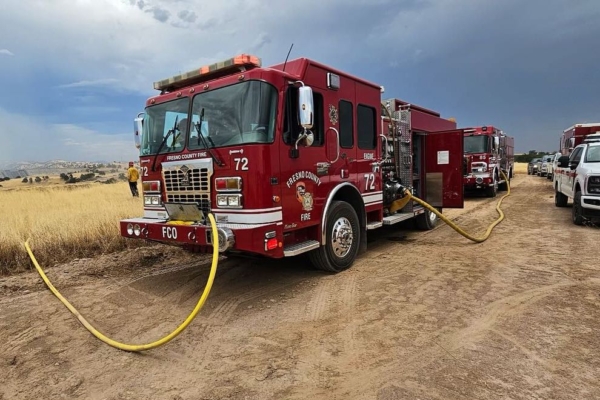In recent years, the cost of extinguishing wildfires in California and throughout the United States has been on the rise, making “prevention” an essential component of firefighting strategies.
Since 2014, according to data from the U.S. Department of Agriculture’s Forest Service and the Department of the Interior, these agencies have been spending over $3 billion annually on wildfire suppression. According to the California Legislative Analyst’s Office, Cal Fire’s basic firefighting budget for the 2023-2024 fiscal year is $3 billion, nearly tripling over the past decade and on par with the national budget.
The escalating costs of firefighting have made prevention measures a critical alternative. Cal Fire has been implementing “prescribed burns” to clear forest floors and remove dry “fuel layers,” which has become a cross-agency goal.
Adrienne Freeman, a public affairs officer for the U.S. Forest Service, mentioned in an interview with The Epoch Times that Cal Fire recently broke their 25-year prescribed burn record. Utilizing paved trails and stone walls as potential firebreaks, together with common-sense fire safety measures during camping or hiking, are crucial. Freeman stated, “95% of wildfires are still caused by human activities.”
However, prevention efforts are hindered by policies. Freeman noted that wildfires in California’s mountain and foothill areas are due to years of “fire exclusion” in the high tree ecosystems of the Sierra Nevada Mountains. She mentioned, “Our approach has been completely reversed.” Over the years, fires have been excluded from forests and hillsides, leading to unrestricted growth of vegetation and brush.
Before European settlers arrived in California, indigenous peoples managed forests and wilderness areas through controlled burns. According to the University of California, the 1850 Indian Government and Protection Act banned the traditional practice of “cultural burning.”
Freeman explained, “These forest systems have adapted to fires, with a mechanism called ‘natural fire return intervals,’ usually triggered by lightning-caused natural fires.” Such cycles occur every 7-12 years. She added, “When you exclude fires, you essentially hinder the forest’s self-regulation ability.”
On the contrary, years of drought in densely wooded areas combined with prolonged fire exclusion have created highly flammable environments. Freeman referred to this phenomenon as an “amplifier of power,” making contemporary wildfires more “difficult to control.” Dense vegetation, grasslands, shrubs, and water-deprived trees form an ideal ignition environment, where a lightning strike could ignite a more uncontrollable and destructive fire.
As of 2024, Cal Fire has responded to over 2,800 wildfires, affecting an area of 130,000 acres, approximately 200 square miles.
The “Fresno June Lightning Complex” burned over 10,000 acres (about 15 square miles) in the foothills of Fresno County outside of Sequoia National Park, all ignited by lightning strikes.
In recent years, there has been an increase in wildfire incidents, such as the 2015 Rough Fire that burned over 150,000 acres near Hume Lake and Spanish Mountain in Kings Canyon National Park. In 2018, the Camp Fire in Butte County, Northern California, became the deadliest wildfire in California history, claiming 85 civilian lives, destroying 18,000 structures, and leveling the towns of Paradise and Concow.
The cost of extinguishing wildfires includes expenses for firefighters, airborne firefighting teams, bulldozers, logistical personnel, as well as air tankers and helicopters. However, according to a 2022 report by the Western Forestry Leadership Coalition, wildfire costs also encompass indirect losses. For instance, exposure to smoke “results in significant losses in annual labor income statistically and economically.”
Damage to buildings and property is also factored into the total cost of wildfires. The report indicates that over the past 20 years, the insurance industry has paid an average of $4 billion annually for damaged buildings from wildfires.
Freeman pointed out, “We have a significant population base in what we call the wildland-urban interface.” In these areas that are typically rural, the juxtaposition of buildings and human life poses unique challenges for wildfire prevention and control. She emphasized, “You have to consider these risk values – life and property.” ✧

